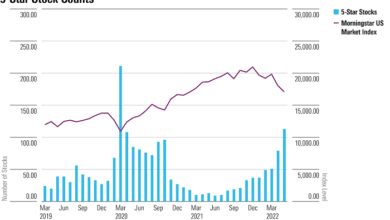How to View Stock: A Comprehensive Guide

Introduction
Navigating the stock market can be daunting, especially if you’re just starting out. Knowing how to properly view stock is crucial for making informed investment decisions. In this guide, we’ll cover the essentials of viewing stock, from understanding market basics to using advanced tools for analysis.
What Does It Mean to View Stock?
When investors view stock, they are looking at a range of data points and information to evaluate the performance and potential of a particular security. This involves examining stock prices, historical data, financial statements, and market trends to make informed investment decisions.
Importance of Viewing Stock Accurately
Accurately viewing stock is critical because it allows investors to understand the health and potential of their investments. Proper analysis can lead to better decision-making, minimizing risks and maximizing returns.
Tools for Viewing Stock
There are several tools available to help investors view stock effectively. Online platforms like Bloomberg, Yahoo Finance, and TradingView provide real-time data, historical charts, and analytical tools to help you assess stock performance.
Stock Charts
Stock charts are essential tools when you view stock. They graphically represent the price movements of stocks over time, helping investors identify trends and patterns. Learning to read these charts is a fundamental skill for any investor.
Analyzing Stock Market Trends
When you view stock, understanding market trends is key. Trends indicate the general direction in which the stock market or a particular stock is moving. Recognizing whether a stock is in an uptrend or downtrend can significantly impact your investment decisions.
The Role of Financial Statements
Financial statements are critical documents that provide insight into a company’s financial health. When you view stock, examining income statements, balance sheets, and cash flow statements can help you understand a company’s profitability, liquidity, and solvency.
Utilizing Technical Analysis
Technical analysis involves using statistical measures to predict future stock price movements. When you view stock using technical analysis, you focus on historical price patterns and trading volumes rather than the underlying business fundamentals.
Fundamental Analysis for Viewing Stock
Fundamental analysis evaluates a stock by examining related economic, financial, and other qualitative and quantitative factors. When you view stock through fundamental analysis, you look at earnings, dividends, growth potential, and company news to determine its intrinsic value.
Real-Time Stock Viewing
Real-time stock viewing is essential for active traders. Access to up-to-the-minute stock prices and news allows investors to make timely decisions. Platforms that offer real-time data are invaluable for those who need to react quickly to market changes.
Common Mistakes When Viewing Stock
Many investors make common mistakes when they view stock. These include relying too heavily on past performance, ignoring market conditions, and failing to diversify. Being aware of these pitfalls can help you avoid costly errors.
Conclusion
Knowing how to effectively view stock is crucial for any investor. By utilizing the right tools, understanding financial statements, and applying both technical and fundamental analysis, you can make informed decisions that enhance your investment strategy. Remember, the key to successful investing lies in continuous learning and staying updated with market trends.
FAQs
- What is the best tool to view stock?
- The best tool depends on your needs. Platforms like Bloomberg, Yahoo Finance, and TradingView offer comprehensive features for viewing stock.
- How can I learn to read stock charts?
- There are many online resources, courses, and books dedicated to teaching how to read stock charts effectively.
- Why is real-time stock viewing important?
- Real-time stock viewing allows investors to make immediate decisions based on the latest market data, which is crucial for active trading.
- What is the difference between technical and fundamental analysis?
- Technical analysis focuses on historical price patterns and trading volumes, while fundamental analysis evaluates a company’s financial health and market position.
- How often should I view stock data?
- The frequency depends on your investment strategy. Active traders might view stock data multiple times a day, while long-term investors might check their stocks less frequently.




